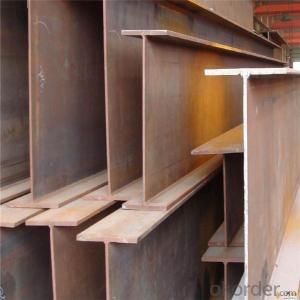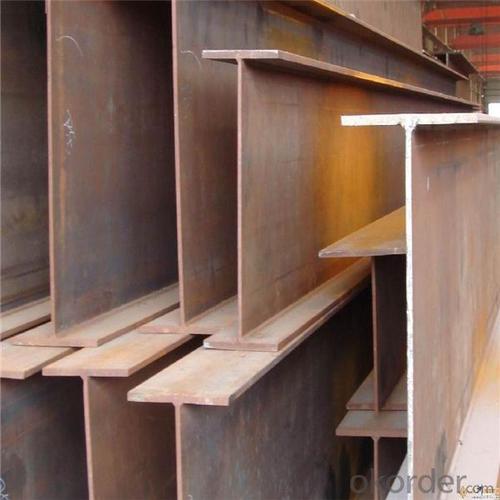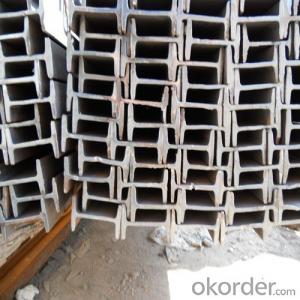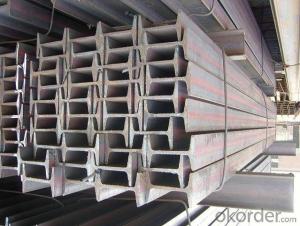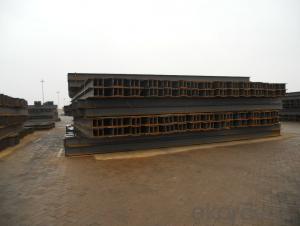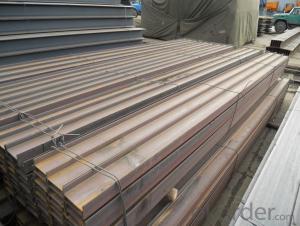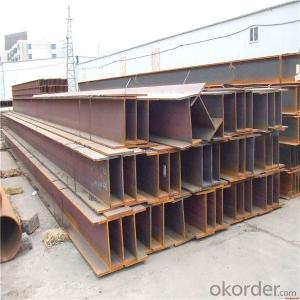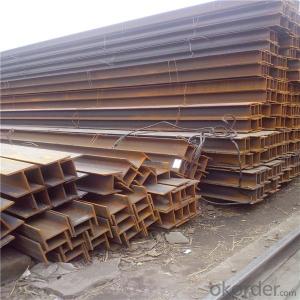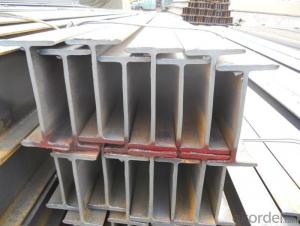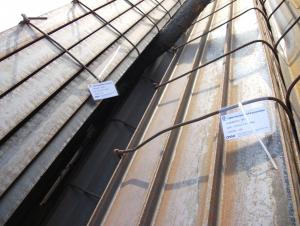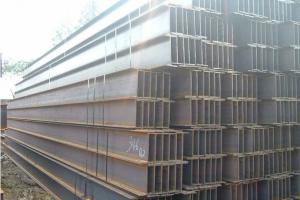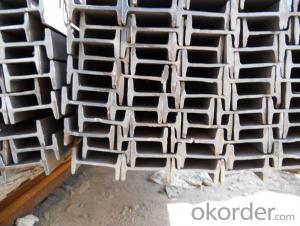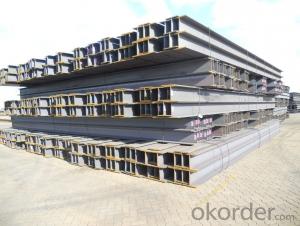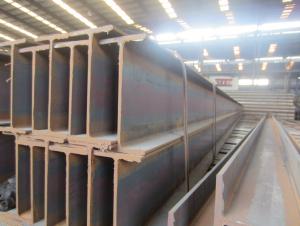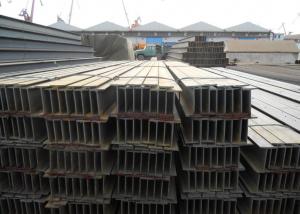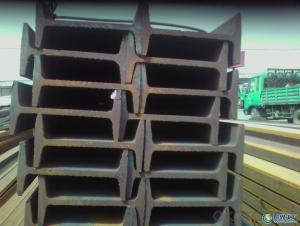GB Hot Rolled H Steel Beams Supplier from China
- Loading Port:
- Dalian
- Payment Terms:
- TT OR LC
- Min Order Qty:
- 125 m.t
- Supply Capability:
- 150000 m.t/month
OKorder Service Pledge
OKorder Financial Service
You Might Also Like
Specification
Quick Detail
Standard: | ASTM, GB, JIS | Grade: | Q235Q345ss400ss490 | Dimensions: | HM100*100*6*--8#428*407*20*35 |
Place of Origin: | Hebei, China (Mainland) | Brand Name: | JINXI | Type: | Alloy Structural Steel |
Application: | roof beam | Shape: | Beams | price: | competitive |
We can provide qualify goods,competitive price and speedy delivery.
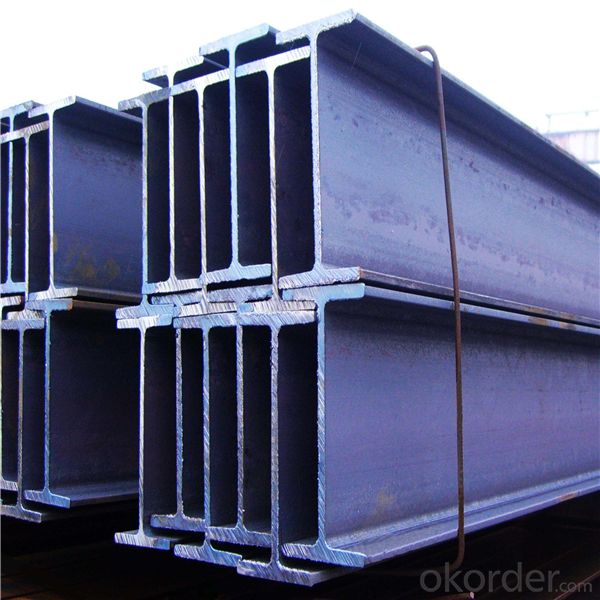
Products Description
Description | High Frenquency Thin-walled H Beam | |
Product Name | H Beam | |
Specification | Height:75-500mm Width:50-250mm | |
Standard | GB700-1998,GB/T1591-1994 | |
Material | Q235B,Q345B | |
Application | a. Bridge and post structures in industry and civil use of steel construction. | |
Certificates | ISO,SGS,BV,TUV,Lloyd | |
MOQ | 20 tons or according to customers’ requirement. | |
Port of Delivery | Tianjin Port of China | |
Remarks | We can provide qualify goods,competitive price and speedy delivery |
Packaging & Delivery
Packaging Details: | Packed with waterproof paper and steel banding. |
Delivery Detail: | 15-25 |
FAQ
1. How can I get some samples?
We are honored to offer you samples. New clients are expected to pay for the courier cost. The samples are free for you.
2 Do you have any certificates?
Our products passed inspection of SGS, FDA, and CE Quality is priority! Every worker keeps the QC from the very beginning to the very end, Quality control department especially responsible for quality checking in each process.
3 Can your factory print or emboss my logo on the goods?
Yes, we can print or emboss the logo on the goods or their packing box.
4 What information should I let you know if I want to get a quotation?
1) The specification of products (length x width x thickness);
2) The temper and alloy.
3) The final product you will use to be made
4 It will be better if you can show us the pictures or design sketch. Samples will be best for clarifying. If not, we will recommend relevant products with details for reference.We usually produce goods based on customers
Samples or based on customers’ picture, logo, sizes etc.
- Q: Are there any limitations or restrictions in using Steel H-Beams in construction?
- Yes, there are some limitations and restrictions when using Steel H-beams in construction. 1. Size and weight limitations: Steel H-beams are available in various sizes and weights, but they may have limitations on their maximum dimensions and weight-bearing capacities. These limitations depend on the specific manufacturer and the steel grade used. 2. Cost: Steel H-beams can be more expensive compared to other construction materials, such as wood or concrete. This cost factor can limit their use in certain construction projects with budget constraints. 3. Availability: Steel H-beams may not be readily available in all locations, especially in remote areas or regions with limited steel manufacturing facilities. This limitation can affect the accessibility and feasibility of using H-beams in construction projects. 4. Transportation and handling: Due to their size and weight, transporting and handling steel H-beams can be challenging. Specialized equipment and logistics may be required to move and position them on construction sites, which can add to the overall project cost and complexity. 5. Corrosion: Steel H-beams are prone to corrosion, especially in humid or corrosive environments. Proper protective coatings or maintenance measures need to be implemented to prevent or minimize corrosion, which can impact the durability and lifespan of the H-beams. 6. Fire resistance: Steel is a combustible material, and H-beams can lose their structural integrity when exposed to high temperatures during a fire. To address this limitation, additional fire protection measures, such as fireproof coatings or fire-resistant encasements, may be required. Overall, while steel H-beams offer numerous advantages in construction, it is essential to consider these limitations and restrictions to ensure their appropriate and safe use in various building projects.
- Q: How do you calculate the plastic section modulus of steel H-beams?
- To calculate the plastic section modulus of steel H-beams, you need to follow a few steps. The plastic section modulus is a measure of a beam's resistance to bending, and it is used to determine its load-carrying capacity. 1. Determine the geometry of the H-beam: The plastic section modulus depends on the dimensions of the H-beam, such as the width, height, flange thickness, and web thickness. These dimensions are usually provided by the manufacturer or can be measured directly. 2. Calculate the area of the H-beam: The first step is to calculate the area of the H-beam cross-section. This can be done by subtracting the area of the flanges from the area of the web. The formula for the area of the H-beam is: Area = (2 * flange thickness * flange width) + (web thickness * web height). 3. Calculate the centroid of the H-beam: The centroid is the point at which the entire area of the H-beam can be considered to act. The formula for the centroid is: Centroid = (A1 * y1 + A2 * y2) / (A1 + A2), where A1 and A2 are the areas of the flanges and web respectively, and y1 and y2 are the distances from the centroid of each area to the neutral axis. 4. Calculate the moment of inertia of the H-beam: The moment of inertia measures the resistance of the H-beam to bending. It can be calculated using the parallel axis theorem. The formula for the moment of inertia is: I = (A1 * y1^2) + (A2 * y2^2) + (A1 * (y1 - Centroid)^2) + (A2 * (y2 - Centroid)^2), where A1, A2, y1, y2, and Centroid are as defined in step 3. 5. Calculate the plastic section modulus: Finally, the plastic section modulus can be calculated by dividing the moment of inertia by the distance from the neutral axis to the extreme fiber (which is usually the point of maximum stress). The formula for the plastic section modulus is: Z = I / c, where Z is the plastic section modulus, I is the moment of inertia, and c is the distance from the neutral axis to the extreme fiber. By following these steps and using the appropriate formulas, you can calculate the plastic section modulus of steel H-beams. This value is essential in determining the beam's load-carrying capacity and its ability to withstand bending forces.
- Q: Are steel H-beams fire-resistant?
- Generally, Steel H-beams are regarded as fire-resistant due to their non-combustible nature and inability to ignite or facilitate fire propagation. Moreover, steel exhibits a high melting point, enhancing its resistance against heat and fire. However, it is essential to emphasize that although the steel beams themselves possess fire-resistant properties, other elements of the building or structure, including connections and adjacent materials, may lack such characteristics. Hence, it becomes imperative to take into account the comprehensive fire safety measures and adhere to building codes to guarantee the overall fire resistance of a structure.
- Q: Can steel H-beams be used for railway bridges or overpasses?
- Yes, steel H-beams can be used for railway bridges or overpasses. Steel H-beams offer excellent strength and load-bearing capabilities, making them suitable for supporting heavy loads and accommodating the dynamic forces of trains. Additionally, their versatility allows for efficient construction and customization to fit the specific requirements of railway bridge and overpass designs.
- Q: What are the different types of steel H-beam connections for high-temperature environments?
- There are several types of steel H-beam connections suitable for high-temperature environments. Some common options include bolted connections, welded connections, and hybrid connections that combine both welding and bolting techniques. Additionally, specialized heat-resistant materials, such as high-temperature alloys or coatings, can be used to enhance the performance and durability of these connections in extreme heat conditions. The choice of connection type depends on factors such as the specific application, load requirements, and the level of temperature resistance needed.
- Q: H steel 200x300 how many tons?
- As for finished H steel, there are some commonly used steel weight scales on the web.
- Q: Can steel H-beams be used in bridge construction?
- Yes, steel H-beams can be used in bridge construction. H-beams are commonly used in bridge construction due to their strength, durability, and versatility. The H-shape provides excellent load-bearing capacity, making them suitable for handling heavy loads and withstanding various environmental conditions. Additionally, steel H-beams can be easily fabricated, allowing for efficient and cost-effective bridge construction. The use of steel H-beams in bridge construction has been proven to be successful in countless projects worldwide, making them a popular choice for engineers and contractors.
- Q: How do steel H-beams contribute to the thermal performance of a building?
- Steel H-beams can contribute to the thermal performance of a building by providing structural support and minimizing thermal bridging. Due to their high thermal conductivity, H-beams can efficiently transfer heat between different areas of the building, helping to distribute and regulate temperatures. Additionally, by incorporating insulation materials around or within the H-beams, thermal energy transfer can be further controlled, reducing heat loss or gain and improving overall energy efficiency.
- Q: What are the requirements for steel H-beams in hurricane-prone regions?
- The requirements for steel H-beams in hurricane-prone regions typically include a higher grade of steel with increased strength and ductility to withstand high winds and potential impacts from flying debris. The beams may need to be designed to resist lateral forces, such as uplift and lateral loads, and may require additional bracing or connections for enhanced stability. Additionally, they may need to meet specific building codes and regulations set forth by local authorities to ensure the safety and resilience of structures in hurricane-prone areas.
- Q: Can steel H-beams be used for data centers?
- Indeed, data centers can utilize steel H-beams. These beams are frequently employed in construction endeavors as they possess impressive strength, endurance, and load-bearing capacities. In order to sustain the weight of equipment and infrastructure, data centers necessitate robust and steadfast structures, making steel H-beams an ideal choice. Moreover, H-beams can be effortlessly assembled and tailored to fit the precise layout and needs of a data center. By employing steel H-beams, data centers guarantee the stability and structural soundness vital for supporting the crucial operations and equipment housed within these establishments.
Send your message to us
GB Hot Rolled H Steel Beams Supplier from China
- Loading Port:
- Dalian
- Payment Terms:
- TT OR LC
- Min Order Qty:
- 125 m.t
- Supply Capability:
- 150000 m.t/month
OKorder Service Pledge
OKorder Financial Service
Similar products
Hot products
Hot Searches
Related keywords
